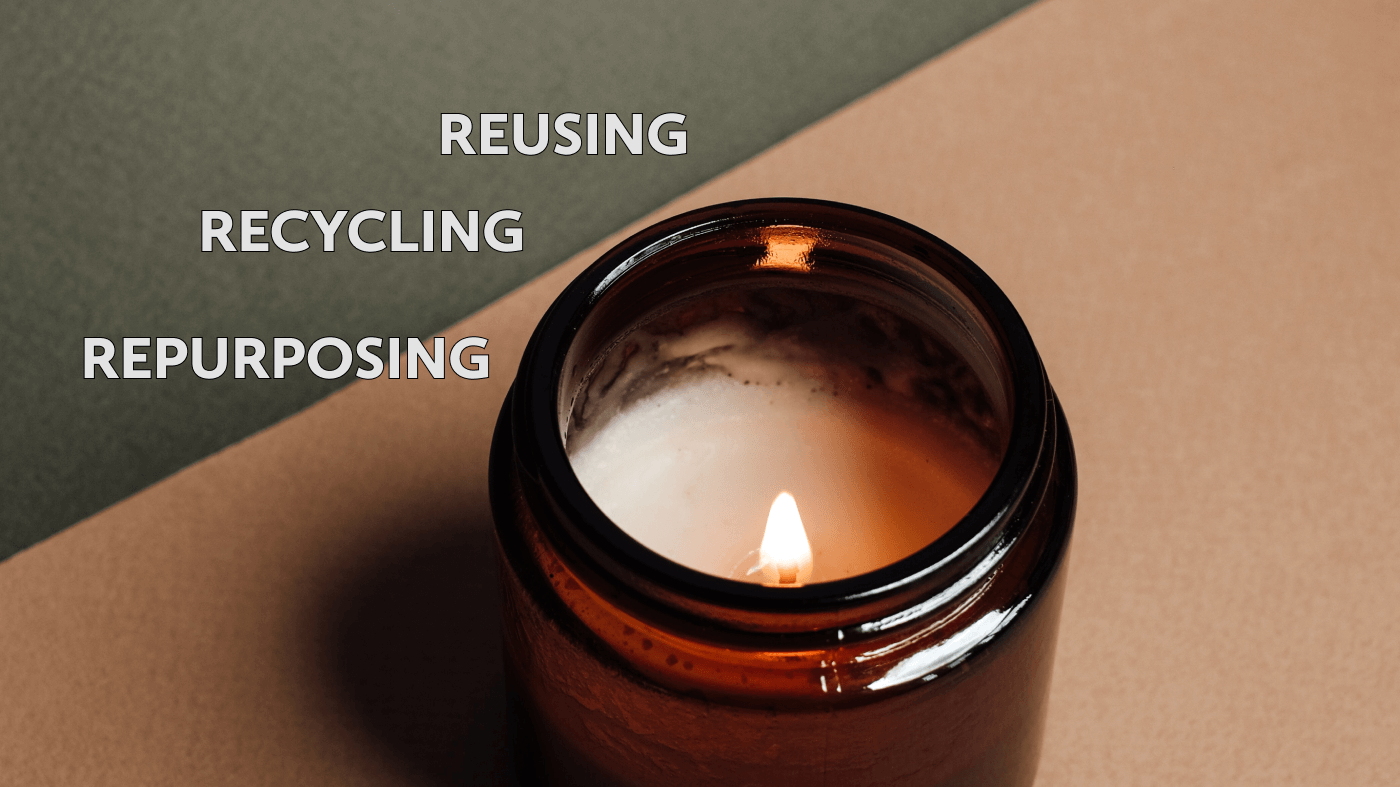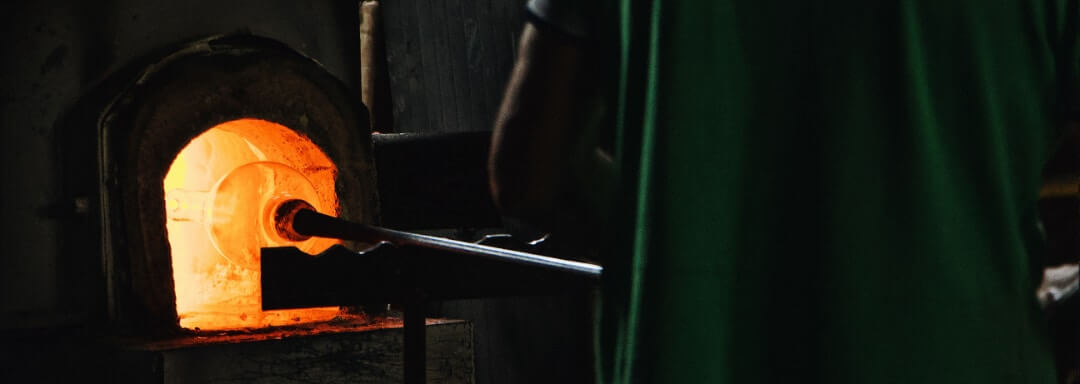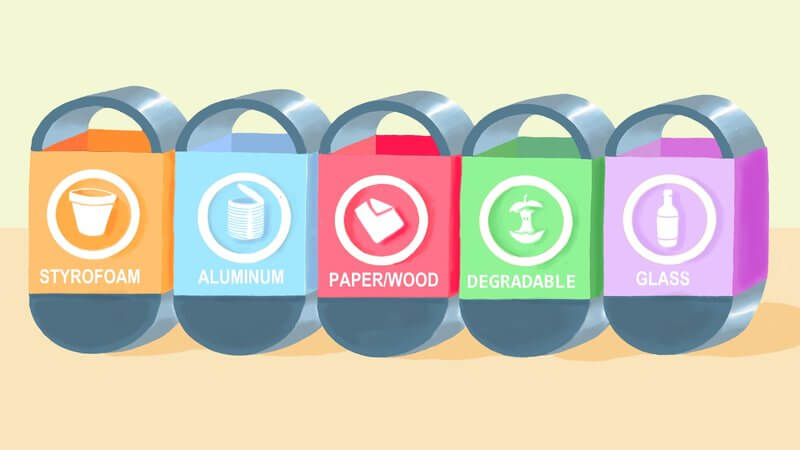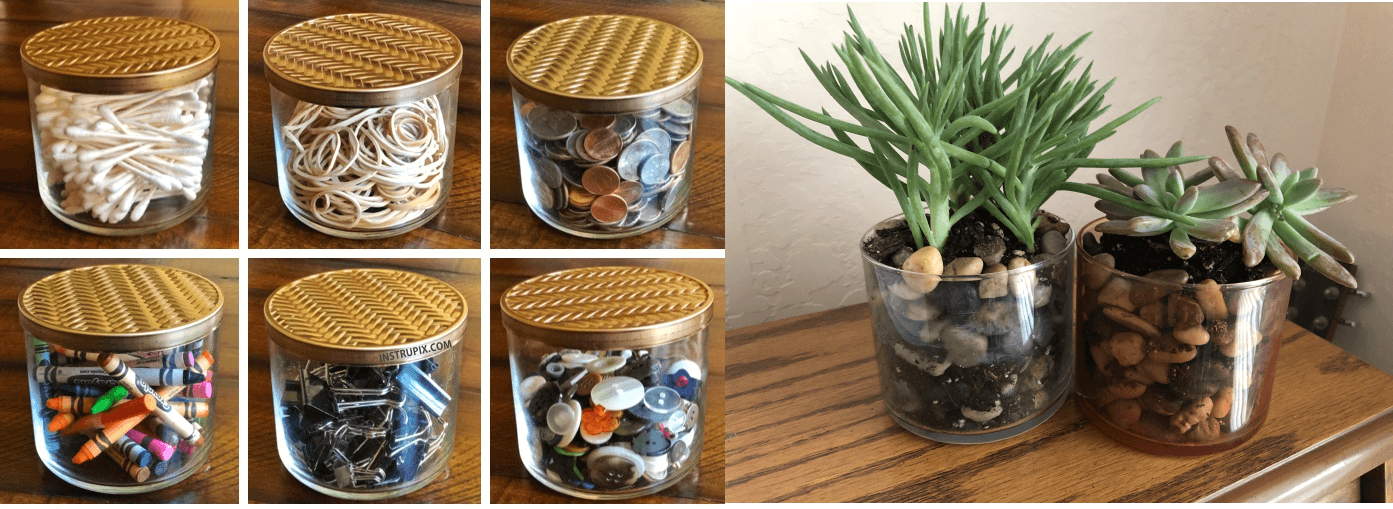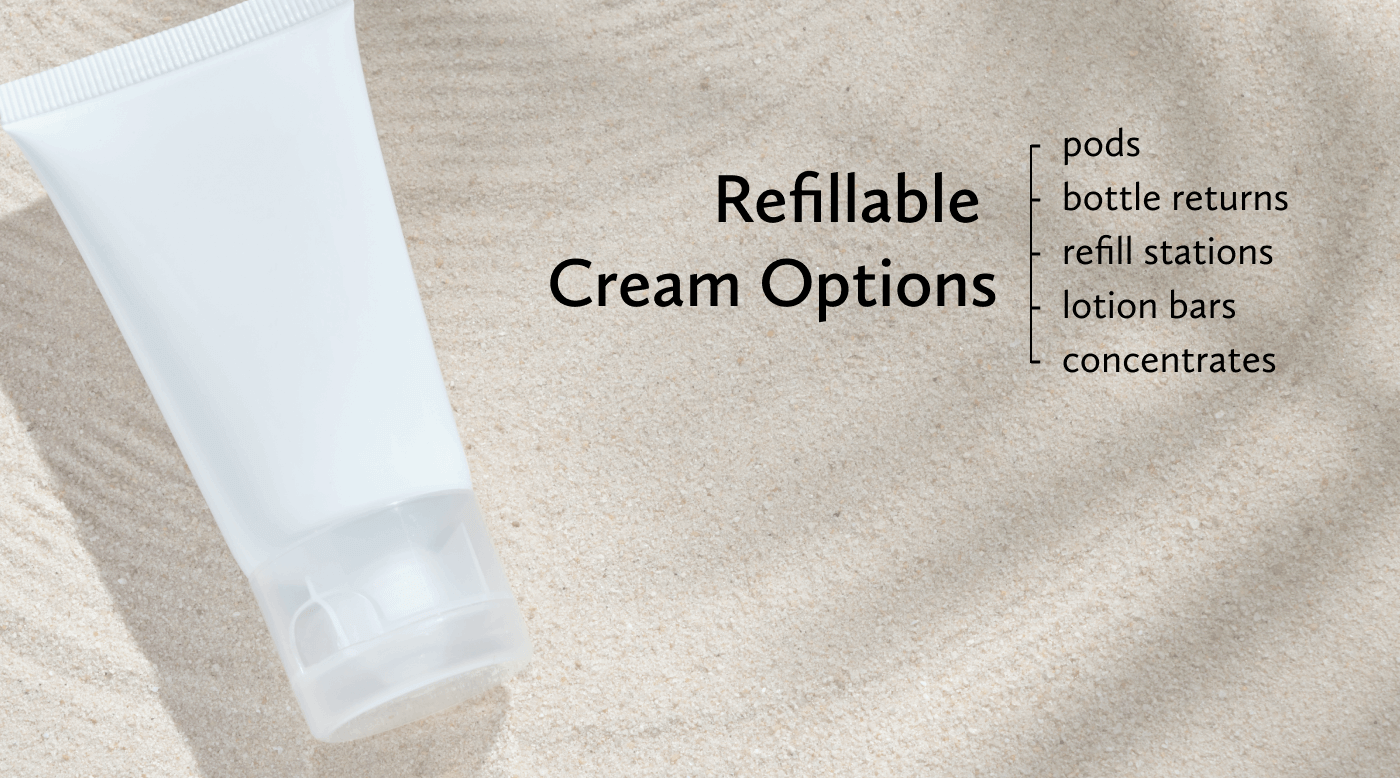Candles make great gifts for the home, whether that’s a monthly subscription box of a surprise fragrances or a decorative, seasonal-themed candle with a soothing aroma like citrus, vanilla, peppermint, or pine. There’s a certain comfort to curling up with a warm mug of herbal tea on a cold day with a flickering candle illuminating a room.
However, when the wick has burned down, what becomes of the glass container that held the wax? There are common assumptions that glass is a sustainable material and can be easily recycled by placing it in the curbside bin, but that’s not always the case. Let’s take a closer look at some of the issues surrounding glass production, and how consumers can replace their old candles in an environmentally responsible way.
Problems with glass
Making glass is energy intensive. Photo: Maël Balland
To examine the environmental impacts of using glass candle holders, first, we must look at the materials required for production. Glass consists of sand, soda ash, and limestone, and for sand to melt, it must be heated to about 3,000 degrees Fahrenheit — a process that requires a tremendous amount of energy.
Mineral mining causes damage to the environment and ecosystems as quarries are carved out of the earth, plus sand mining (in particular) is subject to illegal operations overseas that cause violent conflicts between rival groups (sand wars). Surprisingly, sand is the second most consumed resource on the planet, due to its widespread use for industrial construction (concrete).
In 2020, a study by the University of Southampton suggested that the production of new glass for single-use beverages can be more detrimental to the environment than using virgin plastic, primarily because of how much heavier the glass is, which requires more fossil fuels to transport. To reduce the number of virgin glass being produced, recycled glass is often promoted as more sustainable alternative.
Recycling the container
Recycling rates for glass are low except in cities that have adopted separate bins (called multi-stream recycling). Photo: Make Houston Green
The good news is that glass is recyclable through most municipal programs, and unlike plastic, can be crushed and recycled endlessly without degrading the quality. The World Wildlife Foundation says that compared to new glass creation, it's estimated that recycled glass reduces air pollution by 20 percent, and related water pollution by 50 percent. Recycled glass (called cullet) requires lower temperatures to melt than new glass (and thus, less energy is required).
Despite these benefits, according to the EPA, in 2018 the recycling rate of glass containers was just 31.3 percent and problems continue to persist with existing recycling systems in the United States today. A large reason for the low numbers is that in most areas, a single-stream recycling process is used, meaning that glass is placed into the same curbside recycling bin with plastic, paper, and other materials. This increases the labor costs needed to separate the materials, plus the glass poses the risk of breaking and contaminating other recyclables.
It's true that recycled glass has a lot of potential to be a top contender as a sustainable packaging alternative to plastic (or other materials). When glass is separated into multi-stream (or dual stream) recycling bins, the rate of recycling skyrockets to nearly 90 percent, but unfortunately, only a handful of cities in the U.S. have adopted multi-stream recycling. Even though that list of cities is growing, the majority still use single-stream recycling because of the ease to consumers and cost benefits to municipalities. Given the current lack of availability of multi-stream collections, reusing or repurposing glass is a far better option.
Repurposing the container
Candle jars can be used for storage or planters.
If you no longer need the glass container for a candle, there are many clever ways to repurpose the glass holder. Finding innovative uses for an existing product removes the need to buy a new item and keeps the glass from ending up in a landfill.
Repurposing (and refilling) a candle should be done when the candle has about 1/3 inch of wax remaining. Removing the existing wax can be accomplished by freezing the jar (let the candle cool before placing it in the freezer) and prying the remaining wax out with a butter knife. Alternatively, the wax can be removed by adding boiling water and letting it float to the top. We have compiled some more detailed instructions.
Here are a few handy uses for an existing glass candle holder:
1. Organizing household items
Depending on the size, glass candle jars can store office supplies such as paper clips, pens, spare change, or art supplies like paint bruises and safety pins. In the kitchen and pantry, they can be used as candy jars or to hold tea and coffee, sugar, flour, or other baking ingredients (if the containers include lids). In the bathroom, use the glass holder for cotton swabs, scissors, or hair ties. Lastly, they’re great for storing all those extra bolts, nails, and screws in the shed or garage.
2. Planters, indoor terrariums, and seed starters
Easily track the progress of seeds by wrapping them in a damp paper towel and placing them in the clean, repurposed candle jar. Or, if you have succulents (that don’t require much water), add a little soil and pebbles to the glass containers for an artistic way to display them. Glass mason jars are often used for hydroponic planters, but you’ll also need a seed net, which can easily be made from a small plastic container (like a yogurt cup).
3. Make a solar lantern
This idea takes a little more involvement and materials, but the result is a functional light that doesn’t require grid power. It’s an ideal option for mason jar candles but can be used for other container types as well (with a little ingenuity). However, you’ll need to purchase a mini solar panel module or a mason jar lid with a built-in panel (eBay sells them both for a few dollars), a wire handle (available at most craft stores), and some small LED string lights to fill the jar. You can also decorate the jar with frosted paints or stencil designs to make it truly unique.
If you need more inspiration, Pinterest and Etsy are full of crafty ideas for additional uses for glass candle containers.
Refilling the container
Notes Candle sells wax shavings that can be melted in a reusable candle jar. Photo: Notes Candle
If you use candles frequently, constantly repurposing the jar into different DIY craft projects can be time consuming, and at some point, you’ll likely exhaust the useful purposes you can find around your home. Instead, consider another environmentally friendly method of replacing the candle: refilling it.
Several companies are introducing innovative candle refill options to reduce the amount of glass being produced. Case in point: Notes Candle, which sells individual, one-time refill kits consisting of small bits of wax that can be heated (in the microwave) and poured into a glass candle jar. Another company, Siblings, offers similar solutions that can refill candles up to two times, while Arbor Made uses a different approach by offering silicone-based containers that easily allow the candle to “pop” out when it’s time for a refill. However, those silicone containers are significantly more expensive than similar glass holders.
If you already have a favorite candle fragrance or a preferred luxury brand, unfortunately, most high-end candle companies do not offer refill options, so customers are left paying top dollar every time for a new glass candle holder, leading to an excess of glass containers piling up.
Instead of buying another new candle holder, our own refills have fragrances that are very similar to leading luxury brands, including berries (which compares to Diptyque Paris Baies) and pomegranate (which mimics the Jo Malone London Pomegranate Noir Candle), but are priced up to 75 percent less.
Unlike other refills, there’s no heating or pouring required, you simply drop the replacement candle into an existing glass container.
Final thoughts
Before purchasing a new candle in a glass container, it’s important to consider the full life cycle of the product. Unless the consumer plans to repurpose the candle holder or lives in an area with multi-stream recycling, that glass jar will likely end up in a landfill. Buying a candle refill instead of a new glass jar can avoid the problems associated with the production of new glass altogether and is the more environmentally responsible purchasing decision.
